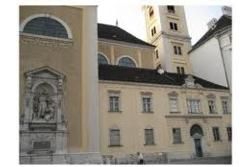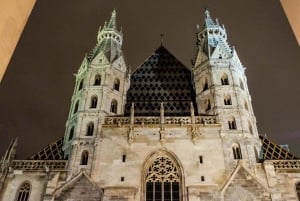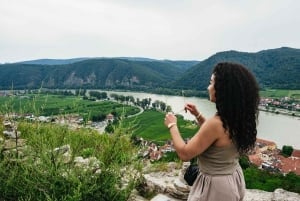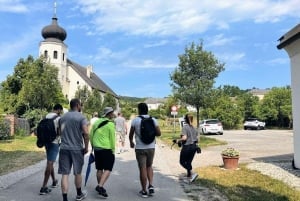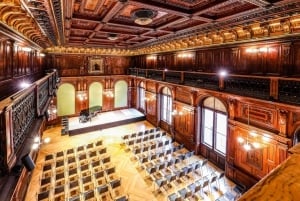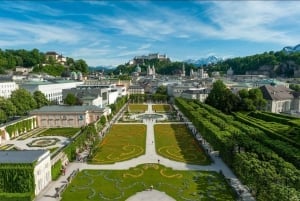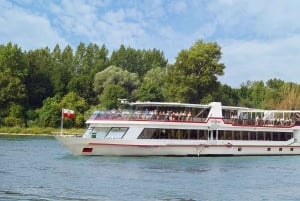History and Culture
Vienna has played an important role in European History for a very long time - let us list the most important historical milestones that have made of this city what it is today.
Prehistoric Times
There is evidence that Vienna has been a settlement and populated since approximately 25000 BC. Why? A sensational archaeological artefacts found in the proximity of Vienna proves this: the famous sculpture Venus von Willendorf, a high statuette of a female figure. Today this artefact can be seen in the Naturhistorisches Museum in Vienna and it proves that around his area, next to the river Danube, people lived and worked the soil. You can also visit the remains of many settlements near Vienna in case you are interested.
Celtic and Roman Times
The area around Vienna gained importance during the Celtic reign and you can find and visit impressive fortified Celtic settlements in Vienna's inner city today. These were built around 500 BC during which the name Vedunia was documented for the first time. Centuries later, around 15 BC, Vedunia was conquered by the Romans and transformed into an important Roman military camp. The city now became known as Vindobona - its main purpose was to watch and guard enemy tribes beyond the borders of the Roman Empire - especially the Barbaric tribes in north of the river Danube. Vindobona also became quite a well known and much talked about city during these times, especially when the Roman emperor Marcus Aurelius died here in 180 BC during a military campaign.
The Migration Period and Early Middle Ages
The Barbaric tribes finally managed to invade the Roman Empire in the 5th century. Centuries of Slavic and Magyar occupation followed in this area until Emperor Otto I managed to kick the Magyars out. By doing so he introduced the Babenberg dynasty and made Vienna his main city of residence in the 12th century. This period was a golden period for the city and Vienna grew and prospered significantly then. Landmarks of that period are to be seen till today, especially in the area around the Schottenstift in the inner city - it is best explorethis part of town by foot.
The End of Babenberg and the rise of the Habsburg Dynasty
The last Babenberger died in the mid 13th century and the country was occupied by Ottokar I, the King of Bohemia (a region located north of Vienna). This was not accepted by the German nobility in Europe at that time. In the contrary, it led to one of the largest battles in the Middle Ages: Rudolf I (from the Habsburg family) defeated the Bohemian King Ottokar I in 1278 and took control of these lands around the Danube. He then founded what would become the most important dynasty of Europe in the next centuries - the Habsburg Dynasty. He also introduced peace in the region and allowed the city of Vienna to develop and prosper. When the University of Vienna was founded - one of the oldest in Europe - the city gained even more importance and respect within Europe. In 1156 Vienna was named the capital of the Austro Hungarian Empire - by then the Habsburgs had conquered new lands in Hungary and Bohemia.
Vienna prospers till the Napoleonic Wars
The Habsburgs where effective n pushing back the Turks (Ottomans) twice in the next century, just when they were about to enter Vienna. These times were therefore peaceful for the capital and Vienna prospered - compared to most of the Habsburg regions in the Balcans. However, Vienna was not completely spared - the Plague shook Vienna twice in the late 17th and early 18th century, bu this was overcome and Vienna continued to grow and prosper.
In the early 19th century Vienna was occupied by Napoleon twice. Europe was devasted by this war and when it was finally over, it was the beautiful capital of Vienna that was chosen to hold the peace talks - and all European countries gathered in the Wiener Hofburg to discuss and restore the European balance of power that was lost during the long Napoleonic wars.
Revolution of 1848 and the 19th century
Vienna, among many other countries and cities, tried to introduce and follow the happenings of the French February Revolution here in Austria,.And indeed, the Austrian citizens tried to push for more political, but it was all in vain. The imperial army was sent out to crush the uprising and the Habsburg rule continued without much of a change.
However, the city structure and architecture changed significantly during this time. The Vienna Ring was created - all the city fortifications disappeared and a wide boulevard was created that replaced the obsolete walls. This magnificent street was flanked by most impressive and monumental new public buildings, among them the city hall, the opera, the parliament, etc... Also the Danube river was finally regulated and a safe channel was build (the Donaukanal) - today a great district to go out at night) to prevent the city from regular flooding. The population of Vienna was now well over 2 million people and therefore became the 4th biggest city in the world of that time.
World War I and the 1st Republic of Austria
The Habsburg rule came to an end with the assassination of Archduke Franz Ferdinand, heir to the Austro-Hungarian throne in 1914. His death was the main reason that the world powers started the devastating 1st world war. When it ended the Austro-Hungarian Empire ceased to exist. The country was dissolved in many regions and among them Austria as it is known today.
But the 1st Republic also brought some difficult times with it. Hunger, a bad economic situation and the general grudge towards authority in post war Europe led to the Austrian civil war in the mid 1930ies. An authoritarian regime was introduced where the rights of the Parliament were abolished. But not for long....
World War II and Austria's 2nd Republic
In 1938 Vienna was occupied by the Nazi German army. Austria was annexed and ceased to exist. Being part of the German Reich was not of major consequences for the Viennese in the beginning of the 2nd World War. But in 1943 Allied aircrafts started bombing the city. Vienna was under siege for many months. The famous large flak towers (anti-aircraft gun blockhouses, still existing i.e. in the Augarten Park) were constructed to protect the city from the attacks. Vienna was very much damaged during these bombings that did not stop till the end of the war in 1945.
The Allied occupation started in Vienna: the city was divided into 4 occupation zones (Soviet Union, the USA, the UK and France), similar to Berlin. Austria was lucky enough to negotiate the retreat of the Allied troops in 1955 under the Austrian State Treaty (Staatsvertrag) in May 1955. Had it not done so the country would have been split into Eastern and Western Austria - similar as it happened in Germany for nearly half a century.
Vienna today is a modern, historic and very attractive city. It has been voted as the city with the best quality of life for several years in a row. It boasts an excellent public transport system and wonderful recreational areas like several parks, woods and the famous Donauinsel, just outside the city centre. Just check our insider tips section for further information.


